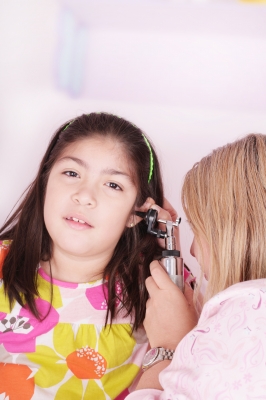Saturday morning, my daughter had to go to school for her Intramurals. By lunchtime, she was home, feeling feverish. When I asked what happened, she told me her left ear was painful.
Three months earlier, I took her to the nearest hospital because the same ear was experiencing some episodes of faint hearing and/or pain.
The doctor prescribed pain medication and otic drops.
We went back to the hospital, knowing this time was worse than last time. The ER doctor told us she had swimmer’s ear, or medically known as otitis externa.
Now the doctor emphasized that strengthening the immune system is a must because people with diabetes or those with weak immune systems are likely to develop a more worrisome form of infection that can lead to hospitalization or intensive care.
What is swimmer’s ear
As the name implies, swimmer’s ear can be triggered when the ear is exposed to water while swimming. Bathwater can trigger it, too. Aside from water inside the ear, swimmer’s ear can also happen when the skin lining of the ear canal breaks due to any one of the following reasons:
- Cleaning the ear canal with cotton swab increases the risk of infection. It is recommended to clean just the outer ear.
- Earplugs, headphones, hearing aids and other devices inserted into the ear may trigger an infection.
- Chemicals such as shampoos, hair dye and bleach may find their way inside the ear and alter the protective properties of the skin lining.
Symptoms to watch out for
- Ear pain, usually in just one ear, is present, which gradually worsens within a day or two. The pain intensifies when the ear is touched or pulled.
- Itching in the ear canal may be experienced.
- Drainage/discharge may leak out of the ear. It can either be colorless, yellowish or bloody, even foul-smelling.
- Hearing trouble can happen as a result of the ear swelling and discharge.
- Swimmer’s ear sufferers may experience ringing inside the ear and vertigo, or dizziness.
- In severe cases of infection, the ear canal may become swollen shut, resulting to hearing loss.
What to do
- Avoid further trauma to the ear. Do not attempt to remove any debris or discharge. If these are present, call immediate medical help.
- Keep the ear clean and dry as gently as possible.
- If the swimmer’s ear sufferer is not allergic, over-the-counter pain medication may be taken.
- Nonprescription ear drops may not be strong enough to combat the ear infection. A visit to the doctor is in order.
- Remember, if a swimmer’s ear sufferer has diabetes, a weak immune system, has a previous history of ear surgery, running a fever, experiencing dizziness or facial weakness, an immediate trip to the emergency room is warranted.
Please note that the above post only aims to provide general information on swimmer’s ear, not to substitute advice from a qualified medical practitioner.
Latest posts by Maricel Rivera (see all)
- Creating a Working Environment in the Home - October 4, 2013
- Time Management is Life Management: When Life Gets Inundated by Time - June 16, 2013
- Speed Writing Is Not Rocket Science, Or Is It? - June 9, 2013





Very informative! Nice site, btw. 🙂
@ Robert, thank you for dropping by, and for the kind words. 😀
helpful info’s indeed!
Way back high school, I used to have this on my home reading report. 🙂 Good job Maricel for tackling on this topic again, most people are not aware of this.
yup even you seem to know you can heal it. its really better to let the doctor see it first especially when it comes to kids.. thanks for letting us know this
First of all, I hope your child is okay now. Ear pain can be very hard. I agree that a visit to the doctor, preferably EENT, is a must. 🙂 I had ear pain before but it turned out to be affected by a sinus infection. Thank you for sharing this useful post. Take care! 🙂
@ Mai … thanks!
@ Herbert … thank you, too!
@ Manong Iskrambol … no problem!
@ Karla … my daughter is okay now, thanks. You take care yourself!